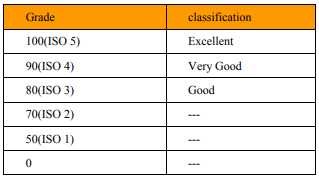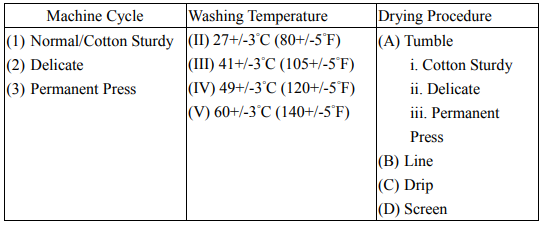Test Method of Specified Requirements of Water Repellency Textiles

Water repellent fabrics are processed with water repellent additives, so that water droplets form on the surface but do not penetrate the fabric, a phenomenon known as“the lotus effect.” The efficiency of water repellency is graded in 6 ratings as 0, 50, 70, 80, 90 and 100. A standard test is usually performed after five launderings with water at a temperature of forty degrees Celcius. To qualify as water repellent, the fabric must perform to at least rating four (90% or better efficiency). Further tests for endurance of water repellency may be performed after 20, 50 or 100 launderings at similar temperatures to the initial test. Water Repellency Textiles are commonly used in fabrics for wind breakers outer garments, umbrellas, furniture decorations to name just a few.
Water Repellent Textiles achieves rating 100 initially, and not less than rating 80 after 100 launderings. The test method employed is AATCC 22.
The Optical Contact Angle for lotus leaf is 135°; ordinary water-repellency treatments reach 130°; ordinary nano-treatments achieve 140°. However, with Taiwan’s special nano-technology for functional textiles, the Optical Contact Angle reaches up to 150°.
1. Scope
This criterion defines the evaluation and testing of water repellency textiles. It is applicable to textiles with water-repellent finishes. However it is not intended to measure penetration of water through the textiles.
2. Terminology
Water repellency: the characteristic of textile to resist surface wetting.
3. Performance specification
4. Test Method
4.1 Water Repellency
4.1.1 Test Specimens
Three test specimens 180.0x180.0mm are needed and should be conditioned at 65+/-2% relative humidity and 20+/-2°C until equilibrium.
4.1.2 Test Procedure
(1) Fasten the test specimen securely in the 150+/-5 mm diameter hoop so that the face of the test specimen will be exposed to the water spray. The surface of the specimen should be smooth and without wrinkles. Place the hoop on the stand of the tester in 45° with the specimen uppermost in such a position that center of the spray pattern coincides with the center of the hoop. The distance should be 150+/-2 mm. Make sure that the warp direction of the test specimen should parallel to the watering direction.
(2) Pour 250ml of distilled water into the funnel of the tester and allow it to spray onto the test specimen for 25 to 30 seconds. Take the hoop by the bottom edge and tap the opposite edge firmly once against a solid object with the fabric facing the object, then rotate the hoop 180° and tap once more on the point previously held.
(3) Repeat the procedure above for other 2 specimens.
4..1.3 Evaluation and Report
After tapping, immediately compare the wet or spotted pattern with the rating chart. Rate the face of the specimen. Report the worst rating.
4.2 Washing requirement:
4.2.1 Select the specified washing condition and drying method based on the following table or suppliers’ provided care instruction.
4.2.2 Fill the washing machine with water to 18Gal(about 68L) and adjust the water temperature.
4.2.3 Add 66+/-1g of 1993 AATCC Standard Reference Detergent to the washing ]
machine. Then, add the test specimens and ballast (total weight: 1.8+/-0.1kg) into the machine. Set the washer for the selected washing cycle and time.
4.2.4 Remove the specimen after final spin and dry the specimen according to the specified method based on the above table. After drying, condition the specimens by laying each specimen separately on the screen in an atmosphere of 20+/-2°C and 65+/-2% RH. until equilibrium.
2018-11-22 16:12


